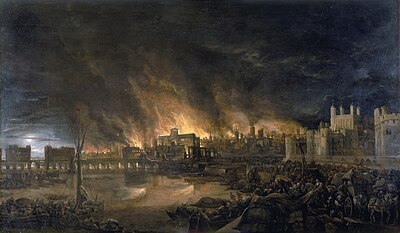Monday, March 4, 2024
The Deadliest School Disaster on this Day in History
Wednesday, November 1, 2023
The 1970 Saint-Laurent-du-Pont Dance Hall Fire on This Day in History
This day in history: On this day in 1970, a fire killed 146 people at a dance hall outside of Saint-Laurent-du-Pont in France. Firefighters discovered upon arrival that the management of Club Cinq Sept had kept the emergency exits padlocked in order to keep people from entering the building without paying. At 1:45 in the morning, when the fire broke out, there were about 150 dancers still in the building who had paid to hear a performance by the rock group "The Storm". The dance hall was decorated with "paper and plastic psychedelic decorations" which caused the fire to spread rapidly, and firefighters in Saint-Laurent were only notified after two young men ran nearly a mile to the town to sound the alert. Witnesses told investigators that the fire had started after a patron had lit a cigarette and then tossed the burning match aside rather than extinguishing it.
In June 1971, one of the managers, Gilbert Bas, was charged with, and found guilty of, manslaughter in relation to the deaths. He received a two-year suspended sentence. Two other managers died in the fire. The mayor and three building contractors were found guilty of causing injury through negligence, and received short suspended sentences.
Wikipedia has an entry with a list of all the nightclub fires.
Codex Sinaiticus & Vaticanus & Alexandrinus Greek - 70 Books to Download
Saturday, September 2, 2023
The Great Fire of London on This Day in History
Sunday, January 1, 2023
Charles the Bad's Horrific Death on This Day in History
Tuesday, December 7, 2021
The Deadliest Hotel Fire on This Day in History
This day in history: The deadliest hotel fire in United States history happened on this day (December 7) in 1946. The Winecoff Hotel fire killed 119 hotel occupants, including the hotel's original owners. Located at 176 Peachtree Street in downtown Atlanta, Georgia, the Winecoff Hotel was advertised as "absolutely fireproof". While the hotel's steel structure was indeed protected against the effects of fire, the hotel's interior finishes were combustible, and the building's exit arrangements consisted of a single stairway serving all fifteen floors. All of the hotel's occupants above the fire's origin on the third floor were trapped, and the fire's survivors either were rescued from upper-story windows or jumped into nets held by firemen.
The fire was notable for the number of victims who jumped to their deaths. A photograph of one survivor's fall won the 1947 Pulitzer Prize for Photography. 1946 was notable for the number of deadly hotel fires. On June 5, 1946 the La Salle Hotel caught fire in Chicago (with 61 fatalities), and on June 19, 1946 the Canfield Hotel caught fire in Dubuque, Iowa (with 19 fatalities) These three fires spurred significant changes in North American building codes, most significantly requiring multiple protected means of egress and self-closing fire-resistive doors for guest rooms in hotels.
The deadliest hotel fire happened in 1971. On Christmas Day 1971, the Daeyeonggak Hotel in Seoul, South Korea, suffered a gas explosion. The resulting fire killed 164 people and injured 63 people.
"Fire departments across the city scrambled to the scene – but their ladders could barely reach the eighth floor. Tragically, 38 people jumped to their deaths, some clutching mattresses in an attempt to dampen their fall. Helicopters were dispatched to rescue those in floors nine to 22 – and one man fell out of a helicopter during a rescue attempt." Source
The worst building fire ever in the US was of course the 9/11 World Trade Center horror. However, before that worst building fire was the Ohio Penitentiary on April 20, 1930, where a candle ignited some oily rags and killed 322 inmates.
However, the worst building fire in the world before 9/11 happened on December 8 in 1863. The Jesuit church, Iglesia de la Compañía de Jesús, in Santiago Chile, burned up thanks to gas and oil lamps and killed over 2500 people.










